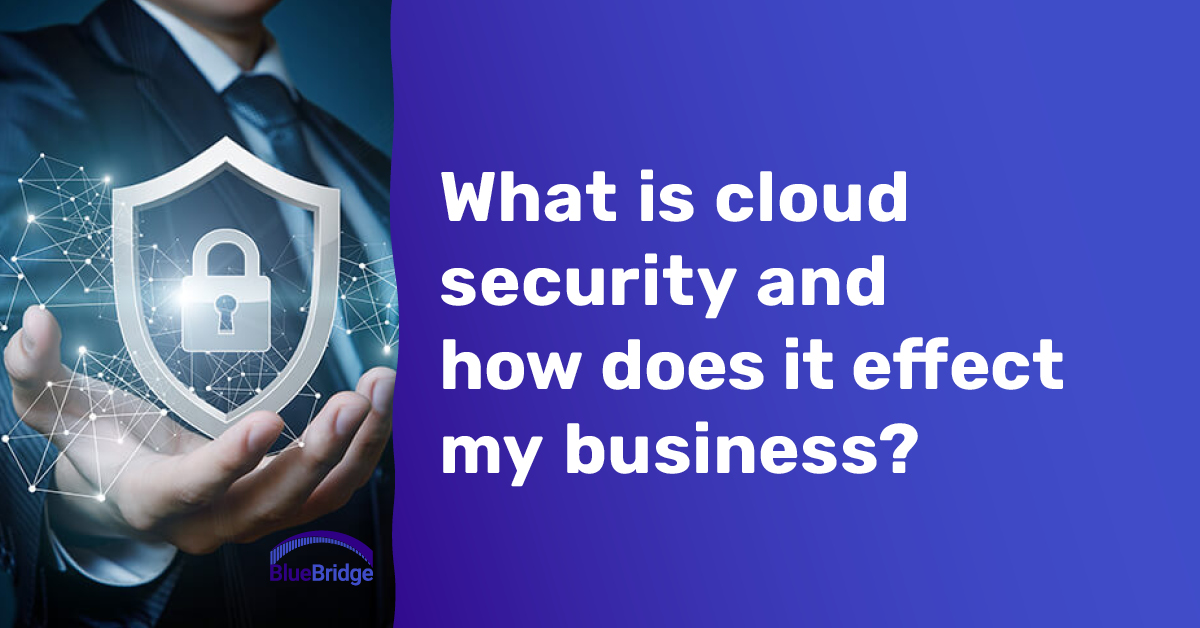Cloud Security Best Practices for 2019

How To Protect Your Cloud Data:
A guide for businesses in Ohio.
1. Determine which data is the most sensitive.
While applying the highest level of protection across the board would naturally be overkill, failing to protect you most sensitive data puts your enterprise at risk of intellectual property loss or regulatory penalties.Your first priority should be to gain an understanding of what to protect through data discovery and classification, which is typically performed by a data classification engine. Aim for a comprehensive solution that locates and protects sensitive content on your network, endpoints, databases and in the cloud, while giving you the appropriate level of flexibility for your organization.
2. How is this data being accessed and stored?
While it’s true that sensitive data can be stored safely in the cloud, it certainly isn’t a foregone conclusion. While much of this data lives in well-established enterprise cloud services such as Box, Salesforce and Office365, it’s important to realize that none of these services guarantees 100 percent safety. That’s why it’s important to examine the permissions and access context associated with data in your cloud environment and adjust appropriately. In some cases, you may need to remove or quarantine sensitive data already stored in the cloud.
3. Who should be able to share it, and how?
Sharing of sensitive data in the cloud has increased by more than 50% year over year. Regardless of how powerful your threat mitigation strategy is, the risks are far too high to take a reactive approach: access control policies should be established and enforced before data ever enters the cloud. Just as the number of employees who need the ability to edit a document is much smaller than the number who may need to view it, it is very likely that not everyone who needs to be able to access certain data needs the ability to share Defining groups and setting up privileges so that sharing is only enabled for those who require it can drastically limit the amount of data being shared externally.
Minimize Internal Cloud Security Threats
4. Bring employee cloud usage out of the shadows.
Just because you have a corporate cloud security strategy in place doesn’t mean that your employees aren’t utilizing the cloud on their own terms. From cloud storage accounts like Dropbox to online file conversion services, most people don’t consult with IT before accessing the cloud. Keep in mind that shadow usage doesn’t just refer to known endpoints accessing unknown or unauthorized services—you’ll also need a strategy to stop data from moving from trusted cloud services to unmanaged devices you’re unaware of. Because cloud services can provide access from any device connected to the internet, unmanaged endpoints such as personal mobile devices can create a hole in your security strategy. You can restrict downloads to unauthorized devices by making device security verification a prerequisite to downloading files.
5. Create a “safe” list.
While most of your employees are utilizing cloud services for above-the-board purposes, some of them will inadvertently find and use dubious cloud services. Of the 1,935 cloud services in use at the average organization, 173 of them rank as high-risk services. By knowing which services are being used at your company, you’ll be able to set policies
- Outlining what sorts of data are allowed in the cloud,
- Establishing a “safe” list of cloud applications that employees can utilize, and
- Explaining the cloud security best practices, precautions and tools required for secure utilization of these applications.
6. Endpoints play a role, too.
Most users access the cloud through web browsers and each user represents an endpoint. Deploying strong client security tools and ensuring that browsers are up-to-date and protected from browser exploits is a crucial component of endpoint cloud security. To fully protect your end-user devices, utilize advanced endpoint security such as firewall solutions, particularly if using IaaS or PaaS models.
7. Look to the future.
New cloud applications come online frequently, and the risk of cloud services evolves rapidly, making manual cloud security policies difficult to create and keep up to date. While you can’t predict every cloud service that will be accessed, you can automatically update web access policies with information about the risk profile of a cloud service in order to block access or present a warning message. Accomplish this through integration of closed-loop remediation (which enforces policies based on a service-wide risk rating or distinct cloud service attributes) with your secure web gateway or firewall. The system will automatically update and enforce policies without disrupting the existing environment.
8. Guard against careless and malicious users.
With organizations experiencing an average of 14.8 insider threat incidents per month—and 94.3 percent experiencing an average of at least one a month—it isn’t a matter of if you will encounter this sort of threat; it’s a matter of when. Threats of this nature include both unintentional exposure—such as accidentally disseminating a document containing sensitive data—as well as true malicious behavior, such as a salesperson downloading their full contact list before leaving to join a competitor. Careless employees and third-party attackers can both exhibit behavior suggesting malicious use of cloud data. Solutions leveraging both machine learning and behavioral analytics can monitor for anomalies and mitigate both internal and external data loss.
9. Trust. But verify.
Additional verification should be required for anyone using a new device to access sensitive data in the cloud. One suggestion is to automatically require two-factor authentication for any high-risk cloud access scenarios. Specialized cloud security solutions can introduce the requirement for users to authenticate with an additional identity factor in real time, leveraging existing identity providers and identity factors (such as a hard token, a mobile phone soft token, or text message) already familiar to end users.

